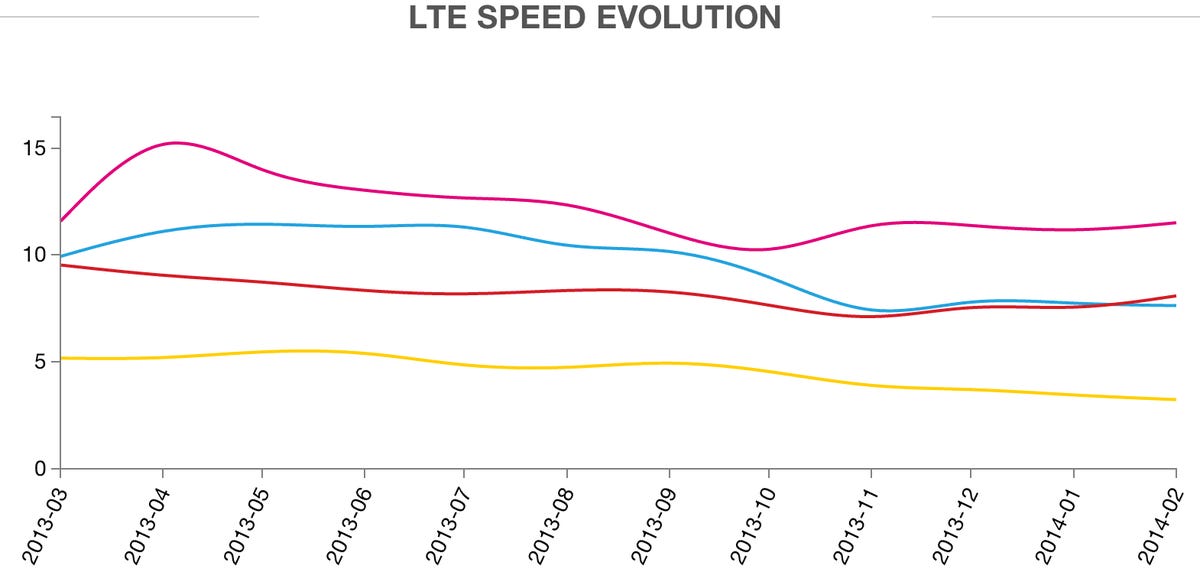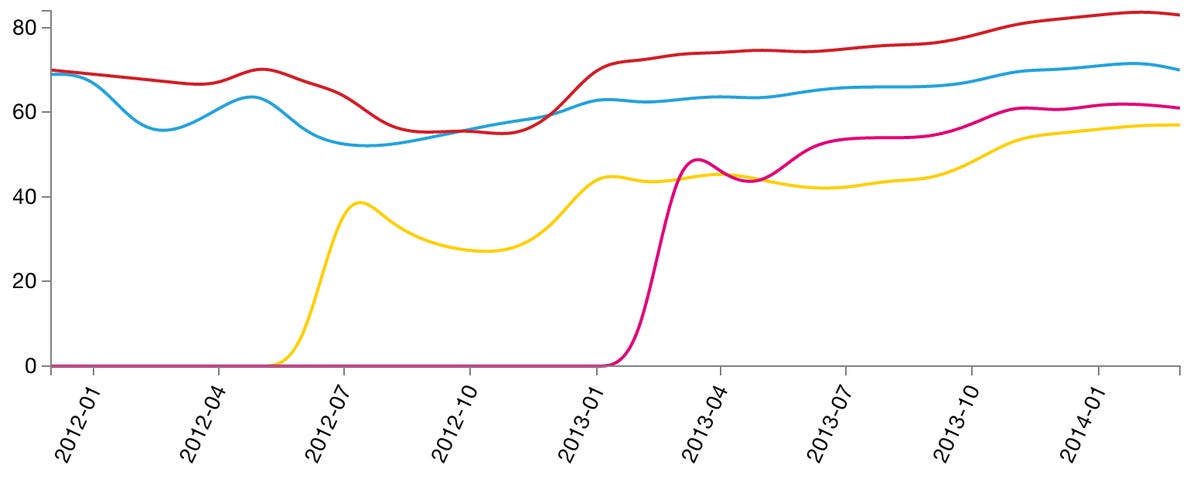
OpenSignal
LTE coverage is improving for the four major carriers in the US, but data transfer speeds on the 4G network are on their way down over the last year, data collected from subscribers shows.
OpenSignal, whose app people can use to monitor their coverage, shows that T-Mobile has the fastest data transfer speeds over the last three months, averaging 11.5Mbps. AT&T placed second at 9.1Mbps, Verizon was in third at 7.8Mbps, and Sprint was slowest at 4.3Mbps.
Those speeds dropped over the last year, though, as measured by the 103,025 OpenSignal users that reported data.


OpenSignal
“Operators are constantly upgrading their technologies and rolling out to new areas, while increased user load on LTE networks combats these improvements,” OpenSignal said in a blog post Tuesday. “Consequently it can be seen that all four networks trend downwards over the past year.”
The US has leapfrogged mobile-networking pioneer Europe in adopting 4G, but the benefits for consumers are counterbalanced by high expenses for carriers. Verizon said it’ll spend between $16.5 billion and $17 billion on capital expenditures in 2014, for example. That type of spending, along with steep fees to license wireless radio spectrum, is driving consolidation efforts such as AT&T’s failed bid to acquire T-Mobile and Sprint’s current push to acquire T-Mobile.
By the percentage of time LTE is available — a measure of coverage in the places people are actually using their phones — Verizon is tops at 83 percent. Next comes AT&T at 71 percent, then T-Mobile at 61 percent, and Sprint again is in last place at 57 percent, OpenSignal said.
Time spent on LTE has steadily increased over the last year, OpenSignal said.


OpenSignal



